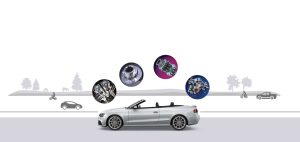The hair transplant surgery has come in a long way from the days of punch grafts developed by Dr O’Tar Norwood in 1950s to FUT hair transplant in 1990s and the recently developed advanced FUE hair transplant technique. The hair transplant in India is done by either the strip method of the surgery or through the follicular unit extraction in the view of graft extraction to fulfil the expected outcome of the surgery.
Time-to-time there are many advancements has been introduced in restoration surgery that defined a new way of hair root extraction with balancing the worthiness and significance of the surgical benefits. The most accepted technique in the restoration surgery is the strip method or the FUT technique that is known as a traditional method due to its old age acceptance in the surgical world. The hair transplant cost in India attracts clients from western nations also that are increasing the graph of medical tourism as well.
The acceptance of FUT technique in the Surgical Restoration:
The FUT is an acronym of the follicular unit hair transplant also called as the strip method of hair root harvesting in which strip of the skin is harvested precisely via the linear incision that helps in obtaining the grafts/follicular units. The hair transplant done by the strip method assures us about the maximum number of grafts in a single session. The FUT or the follicular unit transplant is usually done for covering the higher Norwood grade of baldness.
Why is FUT always the best Decision?
- It is mainly applied to restore hair for the patients suffering from the pattern baldness or the Androgenic alopecia.
- The strip method makes it possible to obtain the best number of maximum grafts in a single sitting.
- The FUT technique is applied to sort out the issue of the greater grade of baldness. i.e., NW-V, VI, or VII.
- Since the FUT hair transplant is performed by excising the strip of the skin from the safe donor part of the scalp hence always gives the DHT-resistant hair roots that remain forever on the scalp.
- It facilitates the possibility of future sitting of hair transplants if required by the patients.
The Relevance of FUE Hair Transplant:
The FUE or the follicular unit extraction method of hair transplant is done by targeting the individual punching process without any angle and direction that helps in obtaining the grafts randomly. The punching process is either performed by the manual punching or the motorized punching machine that helps in obtaining the single graft in a single time. The FUE method of hair root transplantation is usually done when a patient is affected by the lesser grade of Norwood baldness, i.e., NW-I, II or III.
The Limitations of FUE Hair Transplant:
The FUE hair transplant surgery in spite of having a lot of easiness of doing the practice with the advanced machine or the motorized punching tool, it is only performed when the need for grafts are lesser. The limitation of the procedure associated with the strength of grafts and a surgeon can meet the aesthetic requirement only when the affected areas are lesser and need a minimum number of grafts.
- The FUE technique is employed to cover the lesser NW-grade of baldness, i.e., NW-I, II, or III.
- The FUE technique can extract only 2500-2800 grafts in a single sitting due to random punching process.
- It leaves multiple donor scars due to dynamic punches
- The graft transaction rate is higher due to the forecasting and speculation based extraction process.
So, it is advisable to go for the primary evaluation with your surgeon to find out the status of baldness concerning the feasible technique of the procedure.






More Stories
Rapid Mental Health Insights With AI-Powered Paper Summaries
4 Key Steps to Summarizing Animal Health Blogs for Easy Consumption
“PicoLaser: Revolutionizing Skincare with the Power of Picoseconds”